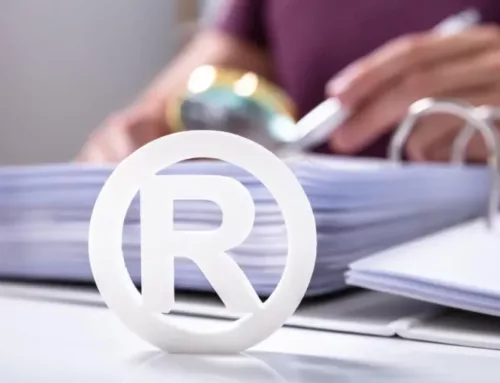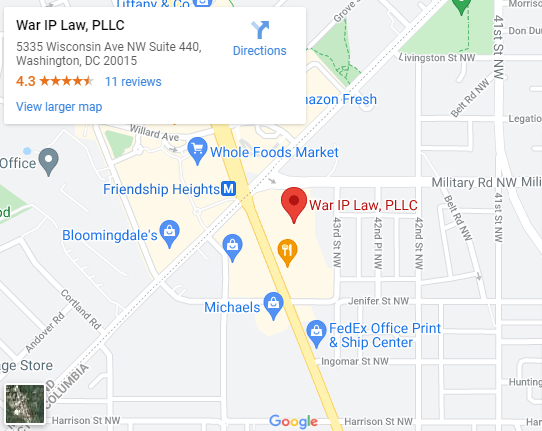According to the Department of State, the United States Patent And Trademark Office has issued over ten million patents. However, millions of trademark applications end up refused or abandoned. A final office action from the USPTO might sound like the end of the trademark or patent application process, but it is often only one step along the way of a lengthy trademark application or patent process. Learn seven possible ways to respond to a final office action for a patent application. If you have received a USPTO final office action on either a patent or a trademark application, consider speaking with a knowledgeable attorney at War IP Law, PLLC at (202) 800-3754 to understand how we may be able to help you with your patent or trademark needs.
What Is a Final Office Action?
Office actions are notices sent by the United States Patent And Trademark Office’s examiners to inform applicants of legal or technical issues with a specific trademark or patent application. USPTO normally only sends a final office action when all legal issues have already been raised and were not resolved by the applicant’s previous responses. Applicants generally have six months to respond to most office actions for patent applications, and generally three months to respond to an office action for a patent application – which is extendable through the payment of various fees to six months. Deadlines do vary, so the specific office action should be checked to determine the specific deadline for that office action.
While a final office action signals an applicant’s last opportunity to file a response during the initial application process, it does not represent the end of the application process. There are many avenues to continue consideration of an application after a final office action is issued. Here are some options for responding to a final office action in the continued pursuit of a patent.
7 Responses To The Final Office Action For A Patent Application
There are a few different approaches to filing a response to a final office action for a patent application. In formulating a response, applicants must fully address all legal issues raised in the final office action and consider the role of the response in their overall patent application strategy. Seasoned intellectual property attorneys at War IP Law, PLLC may be able to assist with developing a robust response to a final office action.
1. File a Response Within Two Months
Filing a response to a final office action within two months can help minimize extension fees, and might encourage the examining attorney to review the response more quickly. The response should address all legal problems and all refusals and/or requirements mentioned in the final office action.
2. File a Response After More Than Two Months
Filing a response to a final office action after more than two months, but within the required deadline, is also an option. This approach can increase extension fees and may limit the applicant’s ability to respond further if the examining attorney does not review the response to the final office action promptly. Filing a response to an office action for a patent application after the first two months can be risky, and is generally only recommended in instances where applicants are making only minor amendments and are highly confident that USPTO will issue a patent allowance.
3. File a Response with a Request for Continued Examination
Another option is to file a response to an office action for a patent application with a request for continued examination (RCE). An RCE removes the finality of a final office action, and USPTO’s next office action will be nonfinal. USPTO charges fees for RCEs, and fees increase with subsequent RCE filings on the same application.
4. File a Response Under the After Final Consideration Pilot Program
USPTO also allows some patent applicants to participate in the After Final Consideration Pilot program (AFCP). The AFCP is designed, in part, to increase collaboration between applicants and USPTO examiners. It provides additional time for examiners to search, consider the applicant’s response, and in some cases, conduct an interview with the applicant.
5. File a Notice of Appeal To the Final Office Action
Applicants may file a notice of appeal to a final office action for either a patent application or a trademark application. Doing so begins the USPTO appeal process, and requires the applicant to pay filing fees. In addition to a notice of appeal, applicants should file a pre-appeal brief conference request or an appeal brief.
A pre-appeal brief conference request cannot include changes or amendments and does not offer the opportunity to submit new evidence. It is a consideration of the application as-is by a panel of three examiners. If the panel makes the decision to agree with this appeal, the USPTO will then issue a notice of allowance or an additional office action. If the panel does not agree with the request, applicants may decide to then file an appeal brief within two months of filing the original notice of appeal, continuing in the appeal process.
6. File an Additional Application
Depending on the issues raised in the final office action, applicants may want to file an additional application based on their current application. Here are three options for doing so for patent applications:
- Continuation applications allow applicants to modify the claims of the patent while preserving the disclosure of the current application.
- Divisional applications may be required when the original application describes more than one invention and must be divided into separate applications which share the disclosure of the parent application.
- Continuation-in-part applications add to the disclosure in the application.
All three options above are considered by the USPTO to actually be a new application, and filing will restart the USPTO application process.
7. Abandon the Application
A final option in response to a final office action is to abandon the application. Abandoned applications are no longer pending and cannot mature to registration. Failure to respond to an office action by the deadline described in the office action notice is one circumstance that can lead to an abandonment of an application. While abandoned applications may be revived in some situations, applicants must understand the strategic, legal, and financial implications of abandoning an application.
How an Experienced Intellectual Property Attorney Can Help
The USPTO application process is fraught with opportunities for costly errors and missteps. Applicants who respond to a final office action without seeking the advice of counsel may be setting themselves up for failure. A seasoned intellectual property attorney can work to ensure that the response to a final office action is strategically sound, fully addresses the legal issues at hand, and preserves appeal and other filing rights. If you have received a final office action from the USPTO and would like to discuss your options, consider speaking with a knowledgeable IP attorney at War IP Law, PLLC at (202) 800-3754 to understand how we may be able to assist you with your response.






